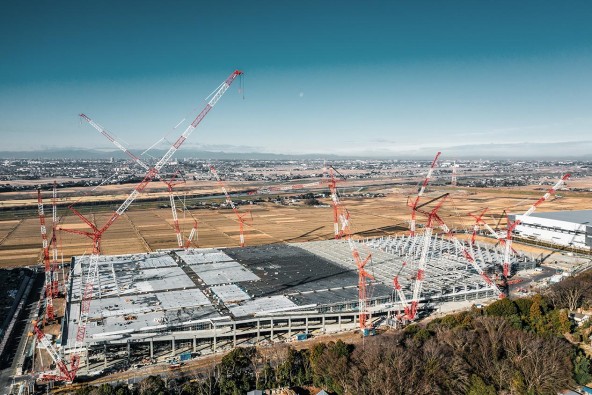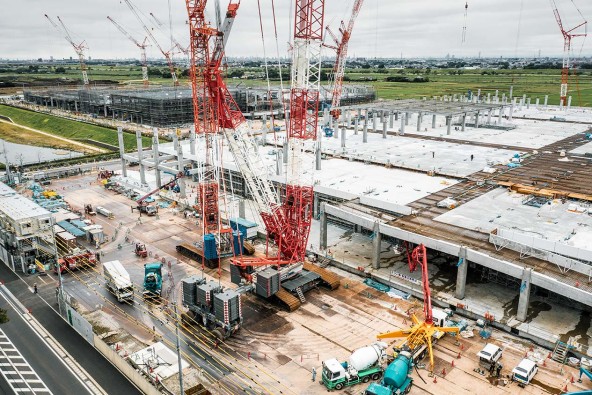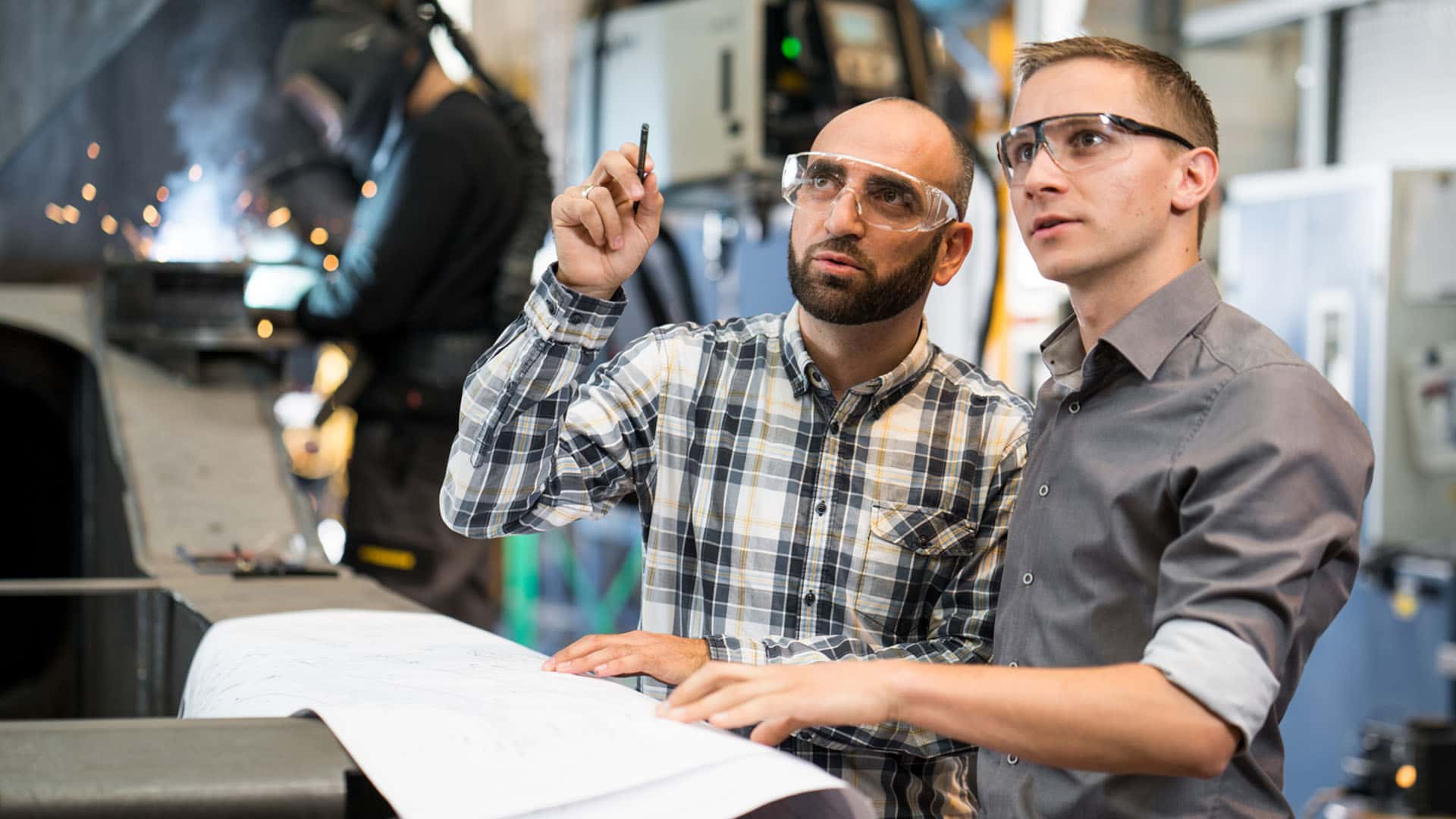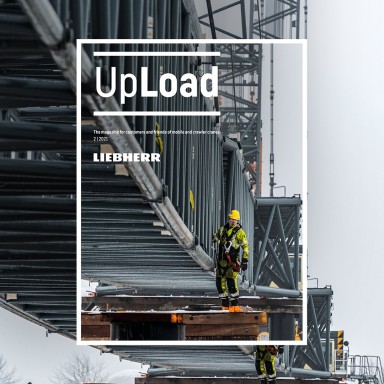 Mobile and crawler cranes
Mobile and crawler cranes
6 minutes | magazine 02/2021
Big in Japan
Roughly 30 kilometers from the city center of Tokyo, the Japanese capital, a full fleet of crawler cranes is on the move. But – what is a full fleet?

Armada of cranes for logistics centre
We are talking about eight crawler cranes, manufactured by Liebherr in Ehingen (Germany), as well as more than five other smaller crawler cranes. A project where more than 13 crawler cranes are involved is certainly worth a closer look.
In September 2019 the construction company Nishimatsu, acting as general contractor, broke ground for a new logistics center in Nagareyama City, in the province of Chiba (Japan). The construction work for the ‘Daiwa House Project Logistics Nagareyama IV’ is expected to be finished by the end of October 2021. Just two years to build one of the biggest logistics centers in Japan – a challenge Nishimatsu was proud to accept. And, it nearly goes without saying: the new logistics center Nagareyama IV is built with a seismic isolation system, like all new larger buildings in Japan.

Tsutomu Nishiyama, President and CEO of Nishiyama Transport Machinery Co. Ltd.
Together with our customer Nishiyama Transport Machinery Co. Ltd., a team of engineers visited the Liebherr factory in Ehingen several months before the project started. The goal of the trip: Learn, check and make sure that the Liebherr cranes were right for the job. Especially the slewing speed of the crawler cranes and their ability to move their hooks even at a distance of 100 meters from the crane cabin were important for this job. It was quite clear that many cranes were necessary to build this huge logistics complex with a front of 400 meters and a width of more than 200 meters in this short timeframe. The cranes would be lifting pre-constructed elements into position. These positions could be anywhere on one of the four floors of the building. Going big in logistics is a general trend worldwide, but an especially big one in Japan. New logistics centers here often contain up to four floors, which can all be accessed by trucks to ensure a fast, easy and smooth running operation.

Willi Schmidt, Sales Manager Crawler Cranes for Japan
“During the first talks, it was already clear to us that we’re going to have a big fleet operating at this job site due to the huge complex which would be constructed in one huge operation”, remembers Willi Schmidt, sales manager crawler cranes for Japan. “Knowing there would be loads of up to 20 tonnes, placed with a radius of up to 128 meters on all floors of the new building, it was important to simulate the loads, tail swing and speed here on our test area in Ehingen.”
Tsutomu Nishiyama, President and CEO at Nishiyama Transport Machinery Co. Ltd. explains: “In the past, we always put a 350 to 500 t crawler crane in the center of such a building and did all the crane work from there. After finishing the crane job, the crane was hoisted out from the center. This was over long years the only way for us, because in the market there were not enough big cranes to do that kind of a job."

Masanori Kanazashi, Managing Director of Liebherr-Japan Co. Ltd.
For this job, this wasn’t an option Nishiyama goes on: “The seismic isolation system is placed in the center of the building, and there is no other way than positioning the cranes around the building. On top the work area is limited and too narrow, so that’s why we needed to install compact and powerful cranes such as the LR 1750 and the LR 1600/2. To complete this kind of job under such special conditions, we’ve contacted the Liebherr engineers in Ehingen for checking and solving each problem one by one.”
The challenges for the crane operators are still huge. Placing the fragile pre-constructed concrete parts, sometimes more than 100 meters away, requires crane operators to adjust the loads very carefully when placing them on the correct positions. Usually there is less than a centimeter of tolerance. In addition, even more agility and care is required to operate some of the cranes that are fitted with ballast wagons. “We are on our way to complete this project using the best match of crawler cranes and skillful operations. So far no accident has happened and we’re focused to complete all the work without any accident,” explains Nishiyama.

Fast relocation of the cranes on site using the ballast wagon
Masanori Kanazashi, managing director of Liebherr-Japan Co. Ltd, adds: “That’s why some of our specialists from Liebherr-Japan have been on-site, supporting Nishiyama on this. On top of this, there have been trainings for the operators in advance and on site to ensure every hoist is performed with a maximum of safety, knowledge and reliability. Nishiyama first noticed our big crawler cranes which would be a perfect fit for the Japanese market, and decided to bring them in, playing the role of a pioneer. We’re looking forward to the opening of the building at the end of this year.”
This article was published in the UpLoad magazine 02 | 2021.





